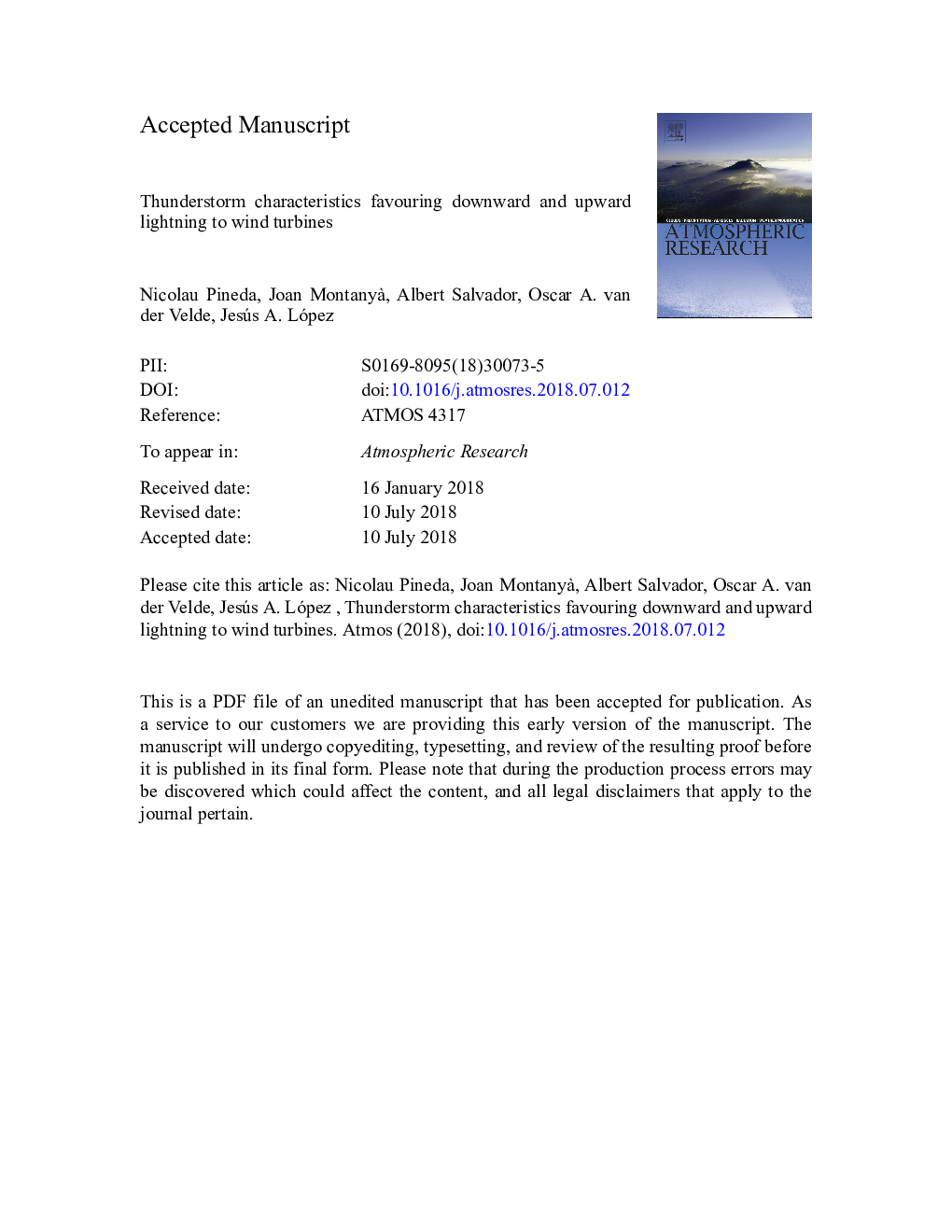| Article ID | Journal | Published Year | Pages | File Type |
|---|---|---|---|---|
| 8864436 | Atmospheric Research | 2018 | 39 Pages |
Abstract
Meteorological conditions and thunderstorm characteristics related to lightning threats to wind turbines are discussed in this paper. Due to the rotating blades, wind turbines may be regarded peculiar tall objects, more susceptible to lightning strikes than other tall man-made structures. In the present study, Lightning Mapping Array and weather radar observations allowed to draw a clear picture of the thunderstorm characteristics leading to lightning strokes to wind turbines, in a coastal area of the Mediterranean basin. Results showed that lightning threats to wind turbines tend to occur during transitional periods (spring and autumn), although the main thunderstorm activity concentrates in the warm summer months. Thunderstorms with downward strokes to wind turbines presented particular features, like a limited vertical development and a dominant lower positive charge layer. Downward cloud-to-ground strokes hitting wind turbines were mainly of negative polarity and with peak currents above the average. On the other hand, conditions for self-initiated upwards from wind turbines resemble those reported in Japan and the U.S winter thunderstorms, with low-cloud based large electrified stratiform regions. These particular conditions, leading to lightning threats to wind turbines, should be properly included in lightning protection standards.
Keywords
Related Topics
Physical Sciences and Engineering
Earth and Planetary Sciences
Atmospheric Science
Authors
Nicolau Pineda, Joan Montanyà , Albert Salvador, Oscar A. van der Velde, Jesús A. López,
